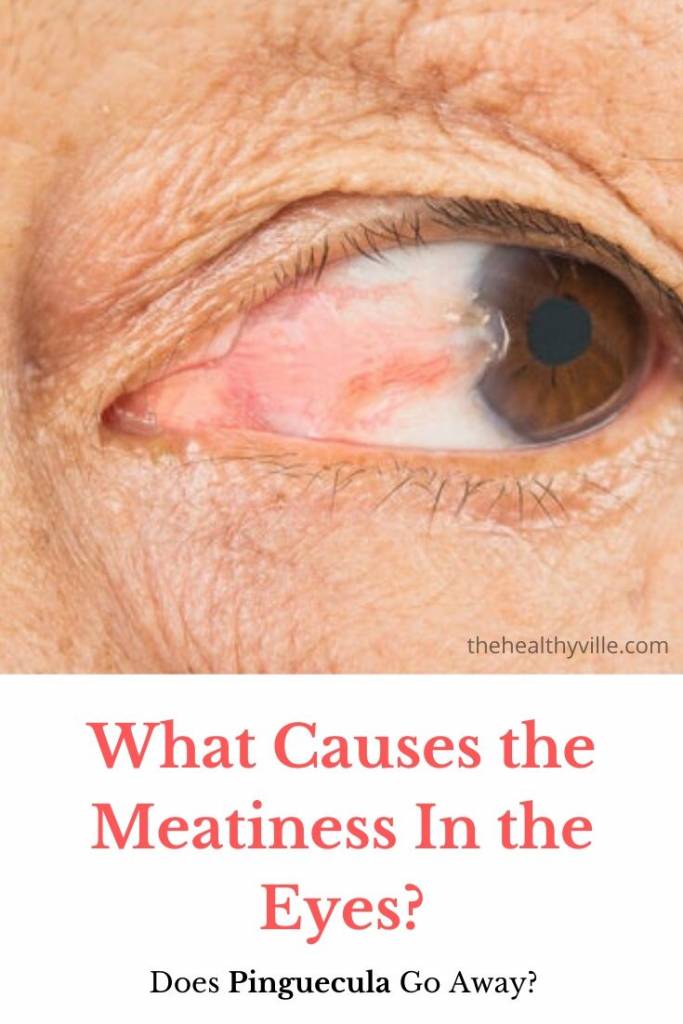Does pinguecula go away? Why the meatiness in the eyes appears? What can you do about it? Is it dangerous or not? Inform yourself on time!
There’s this eye condition that can be really uncomfortable. Some call it meatiness in the eyes, others pinguecula or pterygium.
Meatiness in the eyes is a health problem that is mainly caused by the impact of the sun and the environment. The best way to prevent this condition is to protect the eyes from the sun’s ultraviolet rays, with good glasses. This is a protrusion of tissue that comes out of the conjunctiva and can put eye health at risk, although in principle it is not a serious condition.
Keep in mind that the surface of the eye is directly exposed to the environment. For this reason, it receives the impact of solar rays and air pollution. These are decisive factors for a fleshy appearance in the eyes.
Precisely because of the above, meatiness in the eyes is a problem that appears more frequently in tropical areas. The strong radiation in these regions makes anyone at greater risk of developing one of these conditions.
The meatiness in the eyes is classified, in principle, according to its size:
- It can be small, in which case it does not cause major discomfort.
- It is also possible that it is medium and in that case it usually causes some discomfort.
If it is large, it will most likely affect vision.
On the other hand, this type of condition is also classified according to the degree of inflammation it presents. From that point of view we find two types:
- The atrophic, where the bump is thin and without symptoms.
- The fleshy or inflamed, which is red in color, is thick and causes several symptoms.
Symptoms
The usual symptoms of fleshy eyes are:
- Redness in the eyes.
- Frequent itching or burning.
- Pain that is experienced as stabbing.
- Blurred vision to a greater or lesser extent.
- Feeling of having a foreign object in the eye.
Origin of meatiness in the eyes
As in other cases, science does not know precisely why a fleshing arises in the eyes. What has been identified are the factors that facilitate its appearance; these are:
- Exposure to ultraviolet rays: exposure to the sun continuously, without protection in the eyes, facilitates the appearance of this type of bumps.
- Exposure to environmental elements: wind, heat, dust, dryness and smoke also contribute to the formation of these fleshy.
- Dry eye disorder: those who suffer from it more easily develop a fleshy eye.
- Sleep disruption: when a person stops sleeping frequently and for long periods of time, it tends to generate this type of anomaly.
Further info: How To Break Bad Habits That Disturb Your Sleep And Suck The Energy Out Of You?
Everything indicates that the aforementioned factors prevent adequate lubrication in the eyes. This, in turn, causes dryness and then irritation. Right there where irritation takes place, a new tissue begins to grow, causing fleshyness. It ends up affecting the normal functioning of the lacrimal gland.
Other data of interest
It is very important to protect the eyes from ultraviolet radiation. The best way to do this is to use glasses with UVA and UVB protection, not only on sunny days, but every time we go outside. This applies especially to those who live in tropical countries.
Likewise, it is advisable to wear a hat, hat or visor and some type of eye lubricant, in drops or gel, during the days of greatest sun. It is not advisable to expose yourself directly to it in the hours between 10:00 and 15:00.
Does pinguecula go away?
For now, there is no medication to treat these fleshy eyes. At most, products are prescribed to relieve discomfort. When they grow a lot and affect vision, the only possible option is to perform surgery to remove them.
Don’t forget to SHARE the answer to the question: does pinguecula go away with your friends and family on your social networks!

